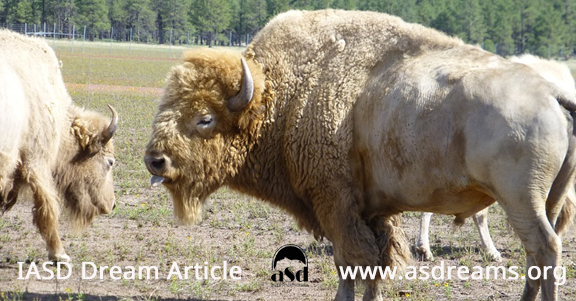 Community Dreams: It Takes a Village to Understand a Dream
Community Dreams: It Takes a Village to Understand a Dream
Big dreams seem to take place during cultural upheaval that impacts not only the dreamer but others in a wider circle. Today, in this time of enormous transitions, we need dreamers who can function as canaries in the mine. From research following September 11th, we know that in the weeks preceding, many people had dreams of planes crashing and buildings falling; they were not understandable until the event took place.
Meredith Sabini
Community dreams
Have you ever had a dream about people or events in the wider world? These dreams may be more common than we realize, but there aren’t guidelines for recognizing them. In ancient Athens, Sophocles dreamed of a gold vessel that had been stolen from the temple of Hermes. Three times it repeated, giving the identity of the thief and the location where the vessel was buried. After the third dream, Sophocles decided to report it to the Aeropagus. A search was made, and both the sacred object and the culprit were found.
Harriet Tubman frequently had dreams and visions of routes to take along the Underground Railroad. She once was leading four men down a country road and fell into a brief sleep, during which she was shown a river to cross and a cabin in which to hide. They soon came to a river, and on the other side was a cabin where a black family took in the runaways.
The discovery of the white buffalo came about in a similar way. The animal was born to a farmer in Janesville, Wisconsin, in 1993. Thinking that something was wrong with it, he kept it hidden. One day, two trucks pulled up. Indians got out and asked if the white buffalo was on this farm. They had driven from North Dakota, following only the guidance from nightly dreams as to what roads to take each day. They assured the farmer they didn’t want the animal, but simply came to honor it with prayers, as the white buffalo is sacred for many Plains tribes. Thousands have since made the journey to see the white buffalo and its white offspring.
These native Indians as well as Tubman came from cultures in which dreams were highly respected. Although Sophocles himself did not believe in dreams, he too belonged to a culture that valued them and could receive their guidance.
Dreams that presaged war
Swiss psychiatrist C. G. Jung had a series of powerful visions and dreams that preceded World War I, but, lacking the cultural template for recognizing them, he mistook them for personal dreams. In autumn 1913, he had a vision of a monstrous flood covering all of northern Europe:
I saw mighty waves, the floating rubble of civilization, drowned bodies … then the whole sea turned to blood. A voice said, “Look at it well; it is wholly real and it will be so. You cannot doubt it.”
In the spring of 1914, Jung had a thrice-repeating dream in which a cold wave descended and froze the land to ice. (See Memories, Dreams, Reflections, 175 ff.) Only when the war broke out in August did he realize these were not about himself but was an objective dream about his “village” of western Europe.
How to recognize outward-facing dreams
During the 1980s, I joined a professional organization and soon had a puzzling dream about being on a ship that was passing through a period of “bad air.” Neither my analyst nor I understood what the dream might refer to. Within the year, a series of sexual misconduct reports came forward within the organization.
How are we to recognize objective dreams about our “villages”? The dream itself may contain important clues. Jung’s dream showed a sudden and disastrous shift in “weather” all over northern Europe; the vehicle on which I was on was a huge ship, not a small boat. The dreams Tubman, the Indians, and Sophocles had were not subjective, but had specific, objective information that enabled them to follow the maps provided.
My title is adapted from the African saying, “It takes a village to raise a child.” A dream is like a child in that more than one or two persons are needed to assure it grows into its fullness. Our conscious mind is limited, but the dreaming mind, evolved over millions of years, has a much wider bandwidth, capable of perceiving changes in the wider circles around us. Whether for professional organizations, ethnic subcultures, or whole nations, we need dream councils or forums like the Aeropagus where we can share outward-facing dreams so that their implications for our “villages” can be understood and their messages integrated.
A longer version of Meredith Sabini’s article first appeared in DreamTime magazine, IASD, Winter 2009, 26:1 “It Can Take a Village to Understand a Dream”.
